Every week, FOOD52's Senior Editor Kristen Miglore is unearthing recipes that are nothing short of genius.
Today: A deviled egg to convince the doubters -- perfect for Easter brunch, dinner, and the unending glut of dyed eggs.
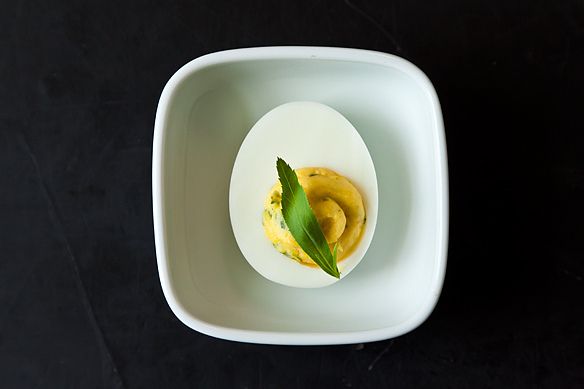
- Kristen
Given our all-but-universal love for eggs, the deviled kind turn out to be strangely polarizing. Lukewarm feelings are not possible, only love or distrust.
That's not to say that it's an even split. The few (like me, before I met this recipe) are suspicious of the whole sneaky feedback system of yolk-impersonating-yolk; the cold jiggly white. We're not about to pick one up at a party, because we know there's no turning back; no "just a taste"; no hiding a tooth-marked egg in shame. A deviled egg is a commitment.
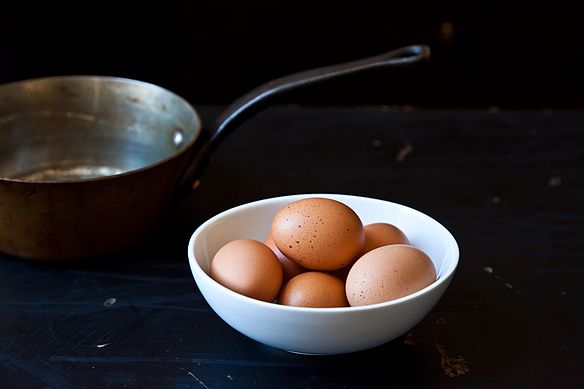
But for the many -- the ones who see no problem with owning trays shaped like this, the only questions are 1) how many can one sensibly eat in a sitting and 2) whether to attack each egg in one bite or two. (The FOOD52 staff is equally divided between one-biters and two-biters.)
Until recently, I stayed away, a no-biter. It was Virginia Willis -- a French-trained chef with strong Southern roots -- who would convert me.

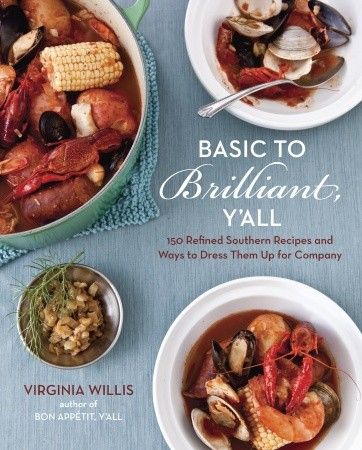
You may remember her lilting voice and sparkly smile from this Warm Summer Shrimp Salad video. Willis is a talented chef and recipe writer, having worked with icons like Martha Stewart, Anne Willan, and Nathalie Dupree for years before publishing her own cookbooks, most recently Bon Appetit, Y'all and Basic to Brilliant, Y'all.
By combining her Southern sensibilities with the restraint of her French training, her deviled eggs just do everything right.
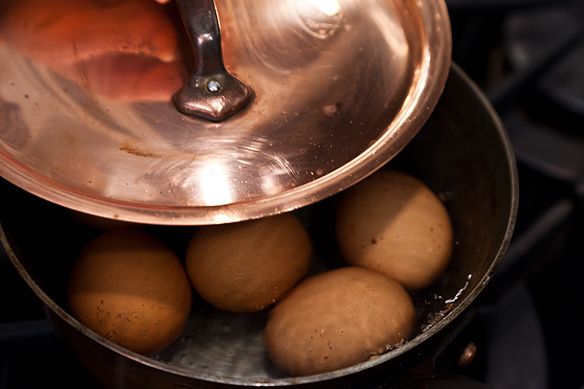
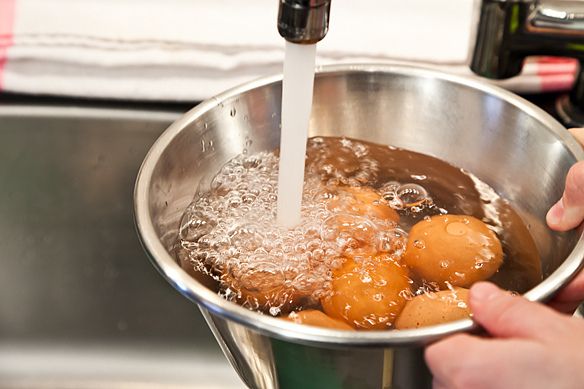
The whites are supple and smooth, more than just a caddy for the golden middles. This is because, technically, the eggs aren't hard-boiled, but hard-cooked -- i.e. left alone for 12 minutes in just-boiled water. As you peel, the eggshells fall away -- if you listen to Willis and use week-old eggs instead of fresh ones.
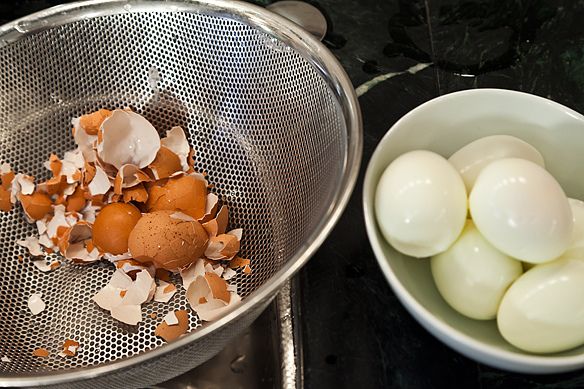
The yolks too are just cooked enough to be firm, but not chalky or sulphurous. Hard-boiled yolks of my childhood were green-tinged and rubbery, like the gutted remains of a chew toy. Not these. They're just yolks, good and yellow.

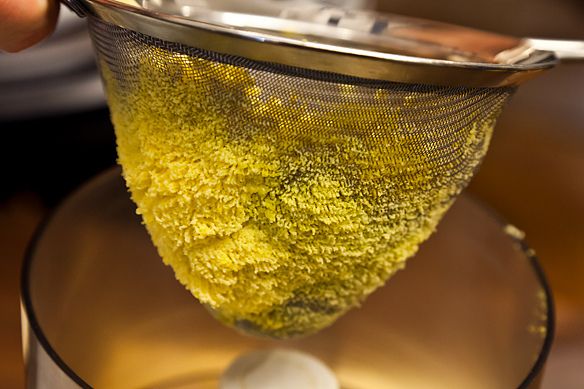
Willis has you nudge them out and push them through a sieve (if you feel committed and listen to her French side) or just plunk them straight into a food processor. Then they're dolled up with only enough condiments to make the yolks go silken and loose, no more. There is no overdosing on sweet, vinegary mayonnaise; no chunky pickle relish to mar the texture.
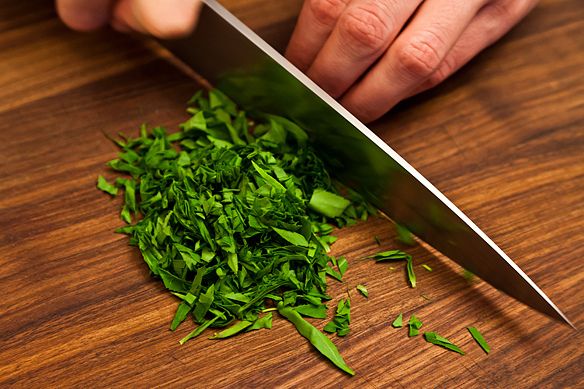
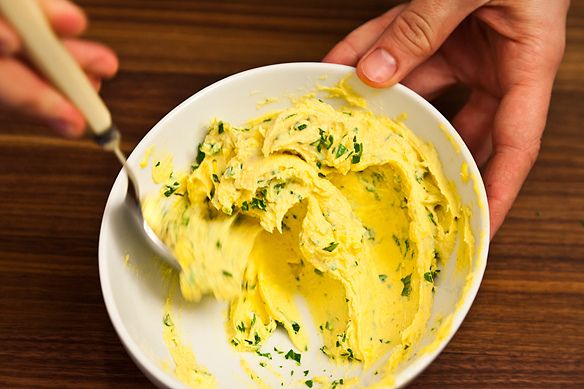
But there is a secret ingredient here, one that Willis picked up in culinary school: butter, just a tad. Mixed in while it's soft, it rounds and smooths over the more acidic ingredients and renders the filling creamy without overtaking it.
A few classic players -- mayonnaise, dijon and cayenne -- hover at the edges, so the richness of the yolk still shines. A speckling of fresh herbs stirred in at the end lifts everything up. A doubter doubts no more.
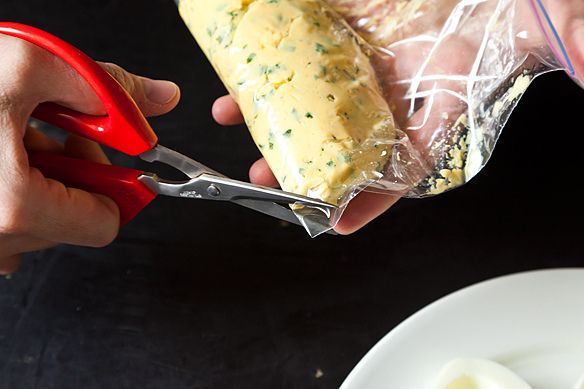
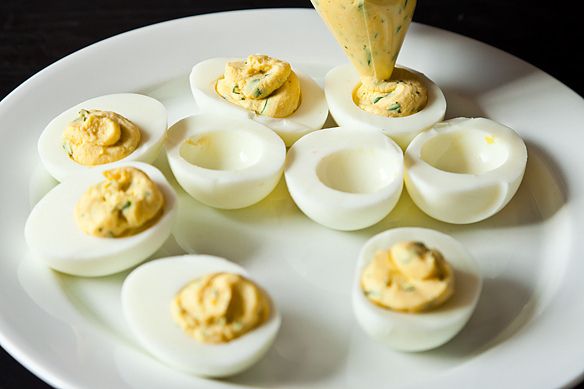
So when you fish those painted eggs out of the planters and sprinkler holes they were hiding in, make deviled eggs. Lots of them. You can expect a few new customers this year. And watch out for those one-biters.
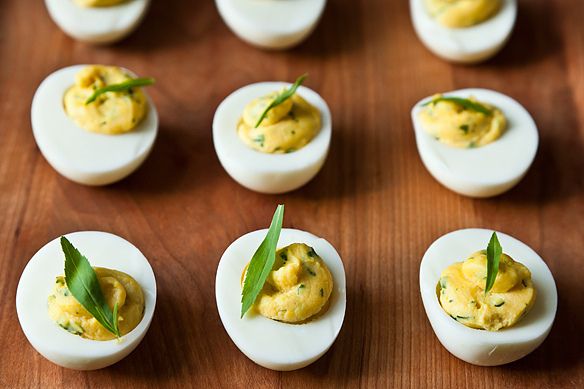
Virginia Willis' Deviled Eggs
Adapted very slightly from Bon Appetit, Y'all (Ten Speed Press, 2008)
Makes 2 dozen
12 large eggs
1/3 cup mayonnaise
2 tablespoons unsalted butter, at room temperature
1 tablespoon Dijon mustard
Pinch of cayenne pepper
Coarse salt and freshly ground white pepper
2 tablespoons finely chopped fresh tarragon, chives, or chervil, plus leaves for garnish
See a slideshow and the full recipe (and save and print it) here.
Got a genius recipe to share -- from a classic cookbook, an online source, or anywhere, really? Please send it my way (and tell me what's so smart about it) at kristen@food52.com.
Photos by James Ransom
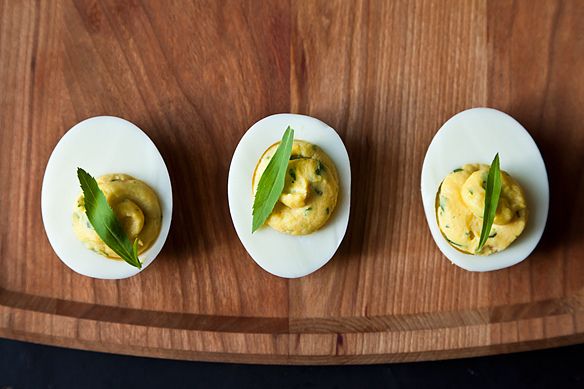

















See what other Food52 readers are saying.